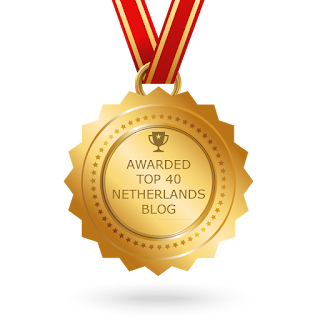Learing a new language is always very exciting. Especially when the new language we’re learning is similar to one we already know. These similarities can be at different levels (phonetical, lexical, syntactical etc.).
The Dutch language belongs to the westgerman branch of the indoeuropean languages and is actually close to German (and Swissgerman).
For many foreigners the pronunciations of “Scheveningen” or “Gouda” are a challenge. It’s especially the way the <ch> and the intervocalic <g> is pronounced that creates some articulatory problems. For Swissgermans the voiceless velar fricative <g> [x] or [ɣ] for the <ch> or the uvular fricative [χ] are very well known. They sound similar to the German in “ach”, “Bach”, “Fach” etc.. Therefore this is not something Germans or Swissgermans would find difficult to pronounce. In the southern Dutch dialects these sounds are softer and <g> and <ch> represent the palatal fricatives ([ʝ] and [ç]).
Something I personally found important to learn are the false cognates or false friends. People already fluent in German when learning Dutch, need to be aware of words that are phonetically similar and sometimes even have similar roots but are different in meanings:
The Dutch aandacht means “Aufmerksamkeit” (attention) in German, and the German “Andacht” means “devotion”.
The zetel is a seat and not a saddle (German “Sattel”), the winkel is a shop (“Laden”) and not an angle, like in German.
With vaart you don’t design the journey or trip (“Fahrt”), but only boat trip and varen refers to the movement of ships only.
Tot is not “tot” (dead) but only means “until” and is pronounced with a short /o/ (whereas the german “tot” has a long one /o:/.
A postbus is not a public means of transportation but a P.O. box (“Postfach”).
The kwartier is not a quarter or accomodation (germ.”Quartier”) but defines a quarter of an hour; and it’s often used in its diminutive form kwartiertje.
Glazuur has nothing to do with baking (germ.”Glasur”; icing) but is dental enamel (“Zahnschmelz”).
“Blaffen“ does not mean to snap at someone, like the German “anblaffen” but the barking of the dog. In German this way to snap is comparable to the barking of a dog though and both words have the same etymon. When a Dutch says that he’s going to call you on the phone, i.e. bellen (ik ga je bellen), which is the abbreviated form for opbellen, or ring at your door, a German would think that this person would bark at him (germ. bellen). For an English speaking person it doesn’t seem too weird, as the English bell (noun) is producing a similar sound although the English verb to bell has a different meaning i.e. the semantic fields for the Dutch bell and the English one are slightly different.
The sale signs for houses and flats puzzle every German speaking person who visits the Netherlands for the first time: te huur (which means “to rent”) seems very similar “to whore” (“huren” in German), but once you learn that <uu> is pronounced like [yː] you’ll get over it. A similar misunderstanding could occur with the verkocht sign, when a property is sold, since it really sounds like the word for “overcooked” in German (“verkocht”).
What were the analogies or similarities you found between German and Dutch? Or another language you know and Dutch?
Related articles
Categories: Dutch, German, Netherlands, Ute's language lounge










Verkocht, lol! Love this 🙂
LikeLike
Yes, ladyofthecakes, obviously you don’t think that the house is overcooked, but still… it was too funny the first time we saw those signs 😉
LikeLike
Verkocht is also kinda mushy… I love the image 😉
LikeLike
I thought you might like this map that shows the lexical distances between European languages. http://elms.wordpress.com/2008/03/04/lexical-distance-among-languages-of-europe/
LikeLike
Thank you, Stephen! This is a great way to show lexical distances between European languages. I’ll discuss it in another post! 😉
LikeLike
I got caught when I was in NL with a client and tried to parlay my German into Dutch. The conversation:
“Okay, in German, this knife is ‘das Messer’.”
–“We call the knife ‘het mes’.”
“Great, it’s clearly cognate. What about the spoon? I know ‘der Löffel’?”
–“In Dutch, it’s ‘de lepel’.”
“Okay, I’m on a roll. Rounding out the set (Besteck), what about die Gabel’?”
–“Ummm, that’s ‘het vork’.”
“Oh.”
LikeLike
That’s great, Troxel. Thanks for sharing this. Indeed, the “vork–Gabel” seems not a match between German and Dutch. In Dutch you find the term “gaffel” for the pitchfork, which in German is called “die Forke” (or more common “Mistgabel”). The two terms have so to say switched their meaning in German and Dutch. – But on the other hand, the German “Besteck” is Dutch “bestek” 😉
LikeLike